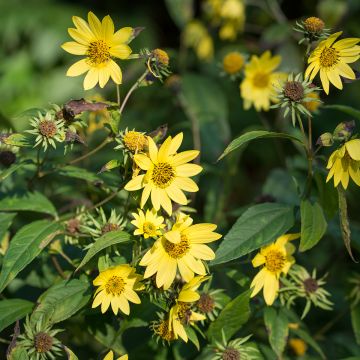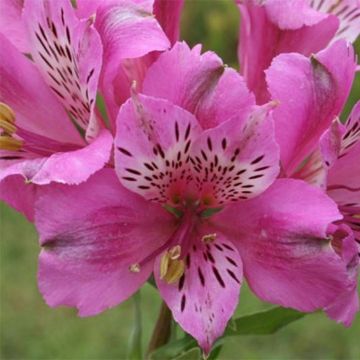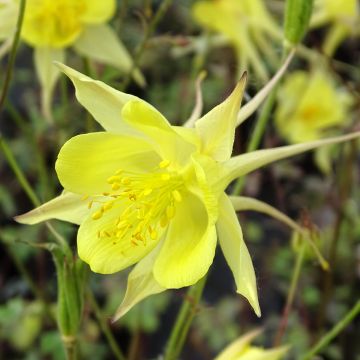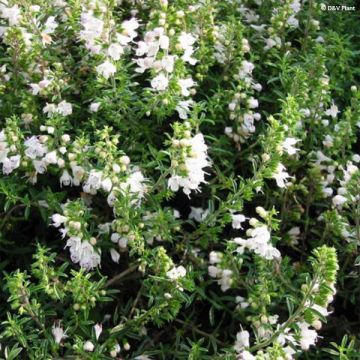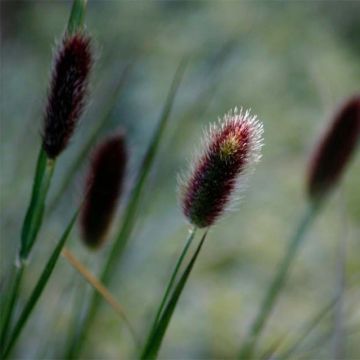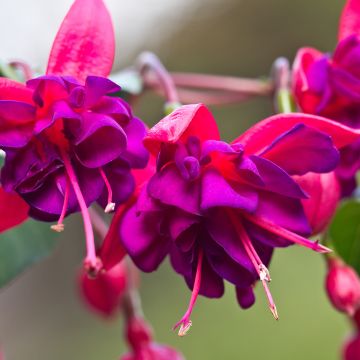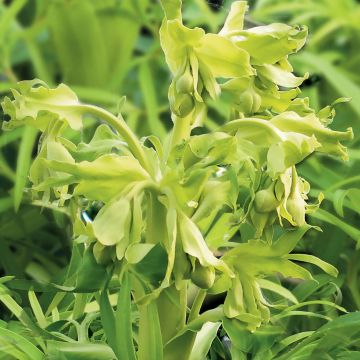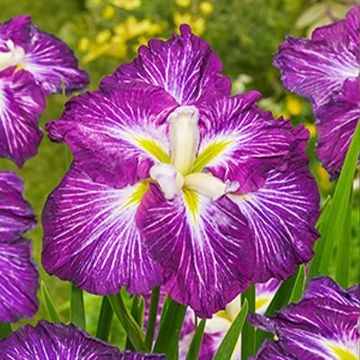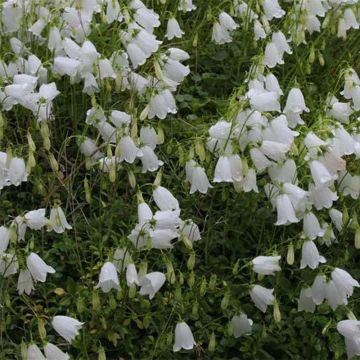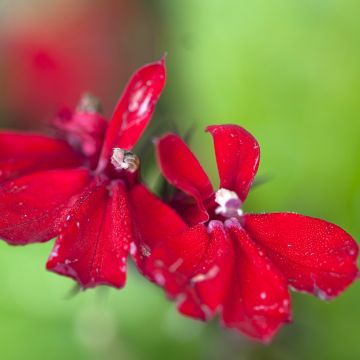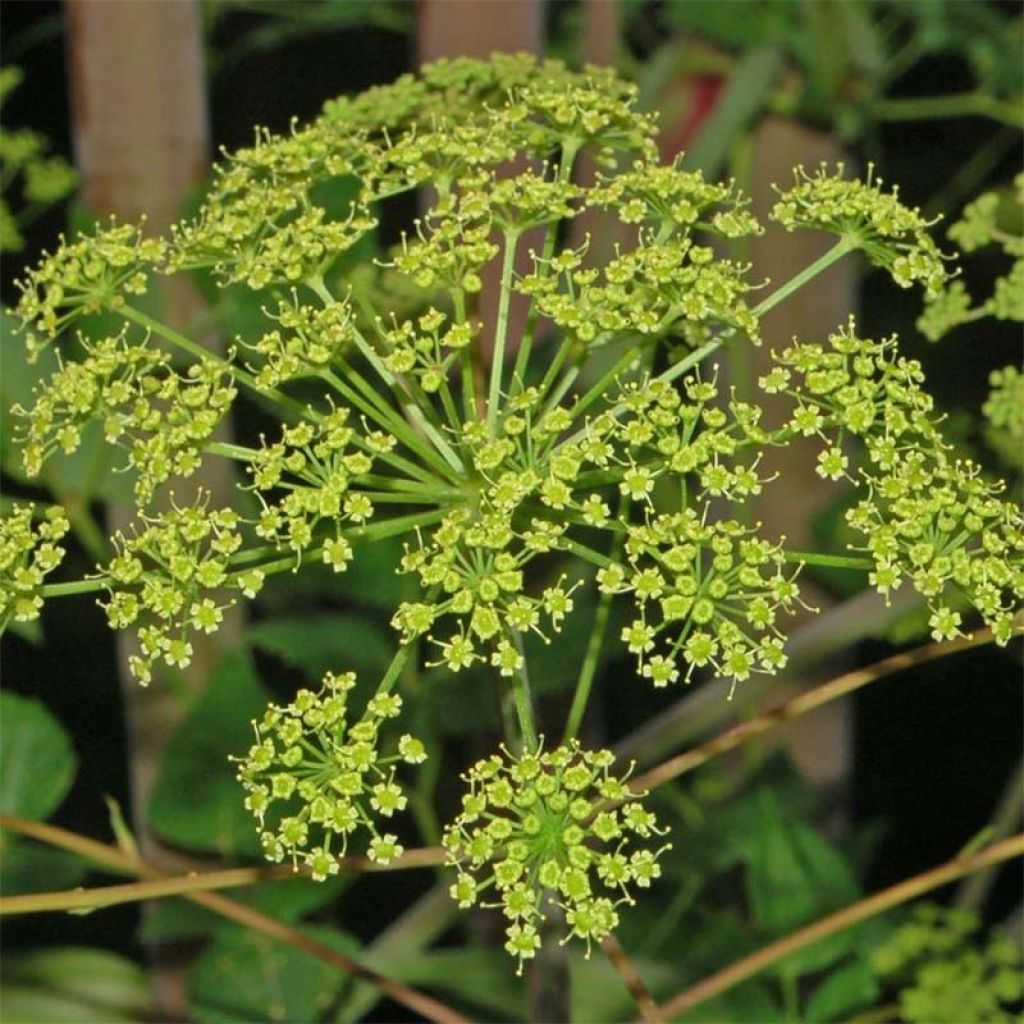

Peucedanum verticillare
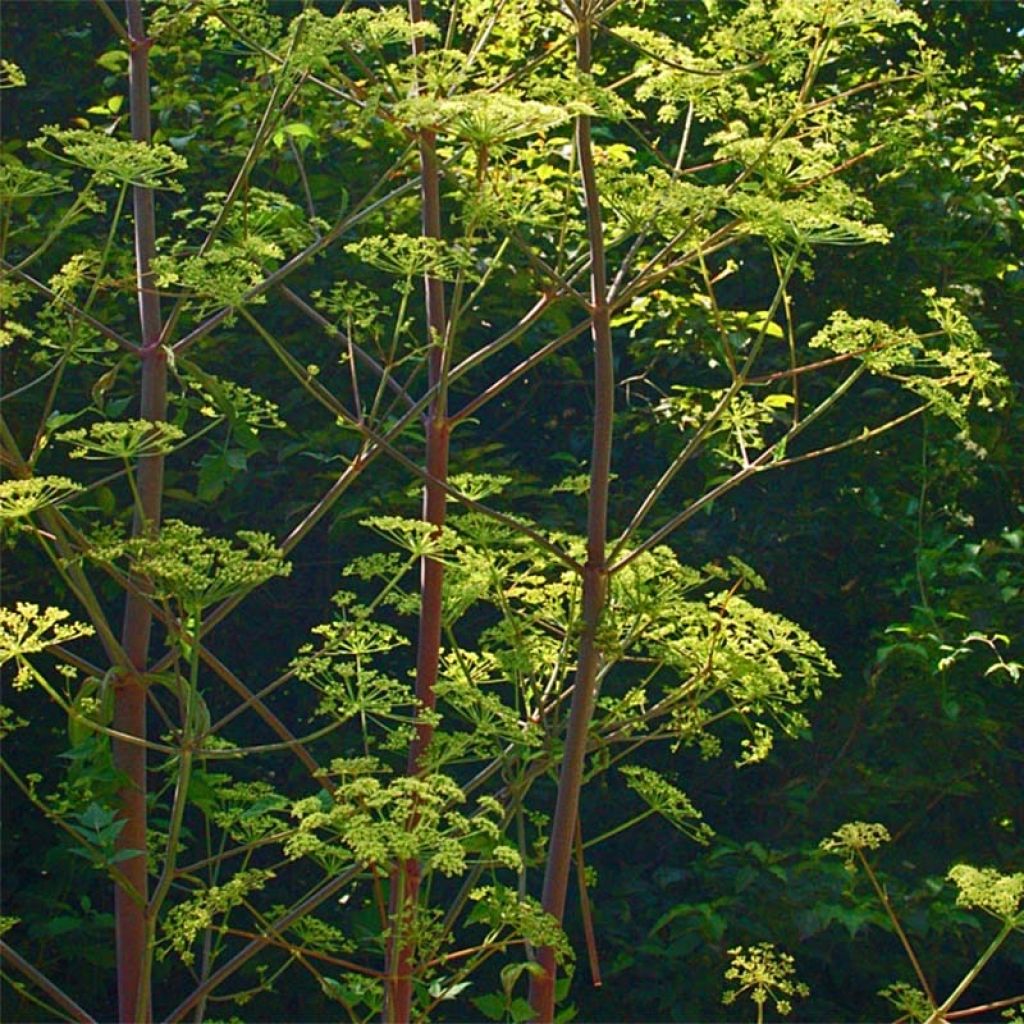

Peucedanum verticillare
Peucedanum verticillare
Peucedanum verticillare
Giant Hog Fennel, Milky Parsley
This item cannot be shipped to the selected country
Delivery charge from €5.90
More information
Schedule delivery date,
and select date in basket
This plant carries a 12 months recovery warranty
More information
We guarantee the quality of our plants for a full growing cycle, and will replace at our expense any plant that fails to recover under normal climatic and planting conditions.
From €5.90 for pickup delivery and €6.90 for home delivery
Express home delivery from €8.90.
Does this plant fit my garden?
Set up your Plantfit profile →
Description
The Peucedanum verticillare is a magnificent representative of the umbellifer family found in the mountainous areas of central and southern Europe, often at the edge of forests, always on moist slopes. This giant has undeniable ornamental qualities, making it a welcome addition to our gardens. It forms a finely textured bushy clump in just a few months, from which powerful spreading flower heads emerge in summer, tinted with brick red and adorned with cream-coloured umbels. The flowering marks the death of the plant, which perpetuates itself through spontaneous sowing. Very hardy, this Peucedanum brings a touch of wildness to the base of trees, and its umbels brighten up shaded areas of the garden.
The Peucedanum verticillare belongs to the Apiaceae family (formerly Umbelliferae), like wild carrot, fennel, parsley, and celery. It is a botanical species native to the Alps. It is a short-lived herbaceous plant, classified as semelparous: it lives only long enough to produce flowers and seeds. Its above-ground vegetation is deciduous; it dies in winter and regrows in spring. This Peucedanum first forms a clump of leafy stems that can reach 1.80 m (6ft) in height and 80-90 cm (32-35in) in width. The foliage consists of large shiny leaves divided 2 or 3 times into variable-shaped and unevenly toothed leaflets. The young leaves are tinged with purple, while mature leaves are dark green on top and glaucous underneath. Flowering mainly takes place in July-August on mature plants. From the foliage emerge hollow, thick, robust floral stems, branching out up to 2.50 m (8ft) in height, bearing compound umbels of yellow-green to cream-coloured umbellules composed of tiny flowers. They are nectar-rich and attractive to bees. After pollination, oblong and flattened fruits form, measuring 7 to 9 mm (0in), with widely winged lateral ribs. The plant can self-seed in light soils.
The Peucedanum verticillare prefers partial shade-rich, well-drained soil that remains moist even in summer. Under these conditions, it is a very robust and trouble-free plant. It thrives in front of a bushy clump of shrubs at the back of a perennial border or even in a large rock garden that is not too dry, where it will have a good pocket of soil. This plant, reminiscent of angelica, is valuable for bees, and the gardener will appreciate its airy appearance to lighten up heavier perennials. It can be combined with sacred bamboo (Nandina domestica), foxgloves, tall perennial sunflowers (Helianthus salicifolius), or, for a bolder choice, with cannas for contrasting forms and colours.
.
Report an error about the product description
Peucedanum verticillare in pictures


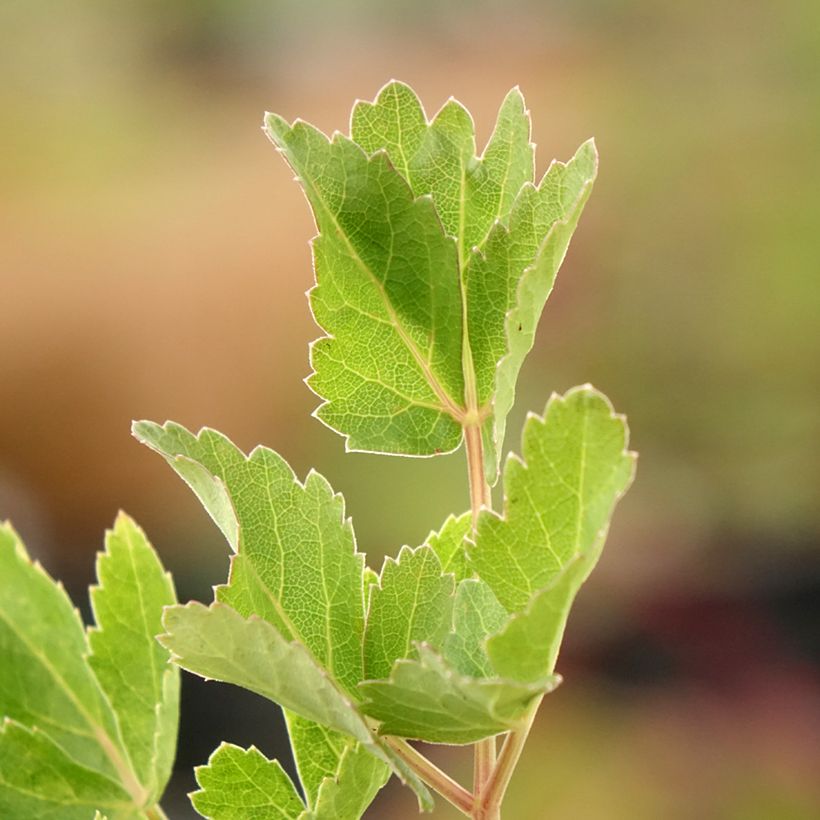



Flowering
Foliage
Plant habit
Botanical data
Peucedanum
verticillare
Apiaceae
Giant Hog Fennel, Milky Parsley
Alps
Other Perennials A to Z
Planting and care
Peucedanum verticillare should be planted in spring in well-drained, rich, humus-rich soil that remains cool in summer. The plant dies after flowering but can be reseeded by the gardener or naturally in light soil. Remove any unwanted seedlings if necessary. This very hardy plant requires very little maintenance where it thrives. A few waterings in summer may be needed if it doesn't rain.
Planting period
Intended location
Care
This item has not been reviewed yet - be the first to leave a review about it.
Summer flowering perennials
Haven't found what you were looking for?
Hardiness is the lowest winter temperature a plant can endure without suffering serious damage or even dying. However, hardiness is affected by location (a sheltered area, such as a patio), protection (winter cover) and soil type (hardiness is improved by well-drained soil).

Photo Sharing Terms & Conditions
In order to encourage gardeners to interact and share their experiences, Promesse de fleurs offers various media enabling content to be uploaded onto its Site - in particular via the ‘Photo sharing’ module.
The User agrees to refrain from:
- Posting any content that is illegal, prejudicial, insulting, racist, inciteful to hatred, revisionist, contrary to public decency, that infringes on privacy or on the privacy rights of third parties, in particular the publicity rights of persons and goods, intellectual property rights, or the right to privacy.
- Submitting content on behalf of a third party;
- Impersonate the identity of a third party and/or publish any personal information about a third party;
In general, the User undertakes to refrain from any unethical behaviour.
All Content (in particular text, comments, files, images, photos, videos, creative works, etc.), which may be subject to property or intellectual property rights, image or other private rights, shall remain the property of the User, subject to the limited rights granted by the terms of the licence granted by Promesse de fleurs as stated below. Users are at liberty to publish or not to publish such Content on the Site, notably via the ‘Photo Sharing’ facility, and accept that this Content shall be made public and freely accessible, notably on the Internet.
Users further acknowledge, undertake to have ,and guarantee that they hold all necessary rights and permissions to publish such material on the Site, in particular with regard to the legislation in force pertaining to any privacy, property, intellectual property, image, or contractual rights, or rights of any other nature. By publishing such Content on the Site, Users acknowledge accepting full liability as publishers of the Content within the meaning of the law, and grant Promesse de fleurs, free of charge, an inclusive, worldwide licence for the said Content for the entire duration of its publication, including all reproduction, representation, up/downloading, displaying, performing, transmission, and storage rights.
Users also grant permission for their name to be linked to the Content and accept that this link may not always be made available.
By engaging in posting material, Users consent to their Content becoming automatically accessible on the Internet, in particular on other sites and/or blogs and/or web pages of the Promesse de fleurs site, including in particular social pages and the Promesse de fleurs catalogue.
Users may secure the removal of entrusted content free of charge by issuing a simple request via our contact form.
The flowering period indicated on our website applies to countries and regions located in USDA zone 8 (France, the United Kingdom, Ireland, the Netherlands, etc.)
It will vary according to where you live:
- In zones 9 to 10 (Italy, Spain, Greece, etc.), flowering will occur about 2 to 4 weeks earlier.
- In zones 6 to 7 (Germany, Poland, Slovenia, and lower mountainous regions), flowering will be delayed by 2 to 3 weeks.
- In zone 5 (Central Europe, Scandinavia), blooming will be delayed by 3 to 5 weeks.
In temperate climates, pruning of spring-flowering shrubs (forsythia, spireas, etc.) should be done just after flowering.
Pruning of summer-flowering shrubs (Indian Lilac, Perovskia, etc.) can be done in winter or spring.
In cold regions as well as with frost-sensitive plants, avoid pruning too early when severe frosts may still occur.
The planting period indicated on our website applies to countries and regions located in USDA zone 8 (France, United Kingdom, Ireland, Netherlands).
It will vary according to where you live:
- In Mediterranean zones (Marseille, Madrid, Milan, etc.), autumn and winter are the best planting periods.
- In continental zones (Strasbourg, Munich, Vienna, etc.), delay planting by 2 to 3 weeks in spring and bring it forward by 2 to 4 weeks in autumn.
- In mountainous regions (the Alps, Pyrenees, Carpathians, etc.), it is best to plant in late spring (May-June) or late summer (August-September).
The harvesting period indicated on our website applies to countries and regions in USDA zone 8 (France, England, Ireland, the Netherlands).
In colder areas (Scandinavia, Poland, Austria...) fruit and vegetable harvests are likely to be delayed by 3-4 weeks.
In warmer areas (Italy, Spain, Greece, etc.), harvesting will probably take place earlier, depending on weather conditions.
The sowing periods indicated on our website apply to countries and regions within USDA Zone 8 (France, UK, Ireland, Netherlands).
In colder areas (Scandinavia, Poland, Austria...), delay any outdoor sowing by 3-4 weeks, or sow under glass.
In warmer climes (Italy, Spain, Greece, etc.), bring outdoor sowing forward by a few weeks.


































